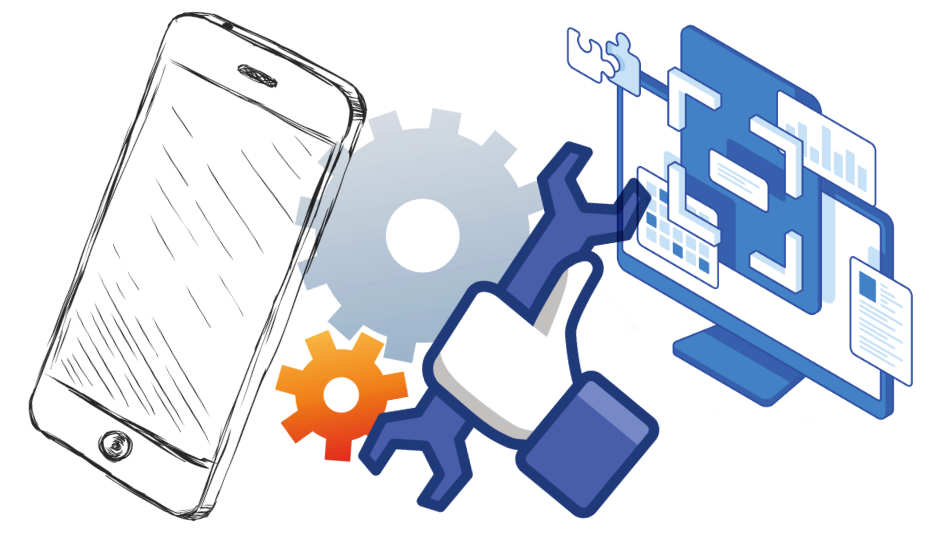All
The Top 10 Must-Have Features for Your Website
by Richard Rutigliano, PriMedia, Inc.

Better online performance means a better customer experience
We’re now entering — or if you’re up in northern New England, several weeks into — a new heating season. If your website is doing what it’s supposed to, that means you’re likely getting many new service and delivery requests right now. If that’s not happening, it likely means your competitors’ websites are bringing in those customers instead. What are they doing that you aren’t?
Now is a good time to review your website’s features and make last-minute upgrades to the site if needed. To help you get started, we’ve come up with a list of our top 10 must-have features for every fuel delivery and home comfort website. Ten items can seem like a lot to consider, especially now, but adopting even just a few of these features could significantly improve your company’s sales and other operations this heating season.
#1: Make It Responsive
If you do not have a website, stop reading this and start developing one right now. If you do have a website, but it doesn’t adapt to mobile devices, you are losing online traffic and real-world customers.
Latest reports show that more than 90% of internet users go online with their mobile devices and more than 56% of organic search traffic comes from mobile. If that’s not enough to make you see the “must-have” quality of a device-responsive site, maybe this will: people using their phone to look for heating services are unlikely to see your company in the search results, and 60% of those who find it will not trust a company whose site isn’t optimized for mobile. Your desktop-only site will chase away the few potential customers who stumble over it.
#2: Design To Attract
It’s said you have only one chance to make a good first impression. On the internet, that chance is about .05 seconds. That is all the time you have before users decide whether to stay on your site or leave, and 94% of those impressions are based on your site design.
Site design includes the coding behind the site, the digital size of the images, and the consistency of the page as it loads. Many of you reading this will recall with horror the “spinning blue circle” of the past, as sites loaded … and continued loading … and continued loading. Not anymore. If your site isn’t developed properly so that it’s usable in under one second, the user is gone before they’ve even seen your design – and then you have a fraction of a fraction of a second to make them stay.
One addition to your site design and development: Your site must also have a security certificate with an “https” prefix. Web browsers warn users before loading unsecured sites, and may require a manual override of the browser’s security features. Many consumers will simply turn away from a site deemed “unsafe.”
#3: Stay Relevant
Is your web content updated regularly with relevant product information? For better organic search results, and to show your customers you know what they need, your site must have content that demonstrates Expertise, Authority and Trustworthiness (E.A.T.) to search engines.
You earn E.A.T. in many ways, including posting FAQs, blogs, information about your services, and customer testimonials. More than 79% of internet users trust online reviews as much as person-to-person recommendations, so make sure you are working to get them on your site and on platforms like Facebook and Google.
#4: Simplify For Success
Online customer service is a “must-have.” It can be a “contact us” form, a live help system, or a digital-to-phone pathway. What it should not be is a source of frustration.
Step one is to keep your contact mechanism easy to locate and use. Nearly two-thirds of customers would refuse to fill a form if it asked for too much info. Break forms into small windows to direct the customer through, if necessary.
Step two is to keep customer interactions simple. Respond with a phone call and have a “real person” answer any return calls. Keep in mind that three-quarters of customers expect your CSRs to know what the issue is when they call. Imagine the customer’s frustration if after submitting an online form, they are asked to repeat the problem to every person they speak with.
An integrated customer service dashboard gives your CSRs the full customer history including the current issue, recent service, equipment type and age, recommendations and more. This simplifies customer service for your customer and your service team.
#5: Take Online Payments
The first online service you must have on your website is an e-commerce option, including online ordering, payments, and purchase options. Adding a sales and ordering system to your website expands your will-call business, and integrating it with automated communications can increase your sales opportunities.
Whether it’s part of your e-commerce platform, or a stand-alone feature, an online payment option is a must-have feature. Anyone receiving an invoice from you will expect to be able to pay online. Furthermore, many will be looking to make their payments via a digital wallet or a service like Venmo or PayPal. Yes, your customers use them. How many customers are between 26 and 52 years old? These are Millennials and Gen-Xers, and 45% of both groups use digital wallets. Your older customers do too – 22% of Baby Boomers. Why make it more difficult for so many customers to pay you?
#6: Create A Self-Service Portal
Approximately 90% of consumers expect an online portal, 61% will start on a portal before speaking to your representative, and 60% prefer an automated portal for simple customer service tasks.
Integrating a self-service portal with your CRM means your customers can pay a bill or schedule a delivery, review service and billing histories, update account information, enroll – or request enrollment – in service and payment plans, and manage multiple properties at once. And they can do it on their time, not on your office schedule. Self-service portals give customers independence and convenience, and give your staff time to deal with more complex customer issues or to focus on sales.
#7: Offer Personalized Content
With your back-end data connected to your customer portal, your company can now send personalized offers via email, text or online messaging like Amazon does: rebate offers to customers with 20+-year-old equipment; reminders as they approach the anniversary of their last tune-up; automatic delivery promotions to those on will-call. Your customers look for these services: 74% of users surveyed feel frustrated when communications are not personalized. Personalization is more than a sales tool – it’s a “must-have” feature that shows your customers you know who they are and what they need.
#8: Communicate Virtually
The pandemic changed a lot of things, and communication platforms like Zoom were among the biggest beneficiaries. Post-pandemic, 70% of customers valued digital solutions that help them connect with others, and 63% expect to rely on digital technologies more than before.
By offering remote service calls on your website, you are meeting these new expectations and making it possible for technicians to complete in-house service calls more quickly. Utilizing these platforms, your service tech can review the situation, walk through basic troubleshooting, diagnose the issue, and walk into the home better prepared to complete the service faster.
#9: Be Social
Your social media presence may not be directly on your website, but it is a “must-have” channel to provide the level of service customers expect. Today’s customers express their concerns via social media posts, comments, or messaging, and they expect a prompt response. Across all age groups, more than half of customers would rather contact you via social media than make a phone call for customer support, especially at the start of an issue. To meet this demand, you should have auto-responders and email notifications set up, and a social media partner to monitor your account regularly.
#10: Show Your Loyalty
As with social media, your loyalty program is not directly integral to your website. But a program that rewards your customers should be integral to your business. Why is this a “must-have?” More than 75% of customers would change brands for a better loyalty program, and 70% are more likely to recommend brands with strong programs. Additionally, 70% would use a “pay with points” option if it were available.
An integrated loyalty program can automatically calculate points for every customer dollar received, and enable them to use those credits toward fuel purchases, services, or system upgrades. Your customers manage their redemptions and rewards via your online portal, with minimal if any CSR interactions. This feature gives you an easy way to help customers lower their fuel costs with you, rather than jump to a competitor with a lower price … and a better loyalty program.
Richard Rutigliano is President of PriMedia, a communications firm that develops custom websites and integrated software specifically for home comfort providers. He can be reached at 516-222-2041 or rrutigliano@primediany.com.
Related Posts
 It’s Upgrade Season. Get the Sale.
It’s Upgrade Season. Get the Sale.
Posted on October 16, 2025
 Your Business Rises and Falls by Your Customer Service
Your Business Rises and Falls by Your Customer Service
Posted on September 19, 2025
 Teamwork Makes the Dream Work!
Teamwork Makes the Dream Work!
Posted on August 18, 2025
 Keeping Your Price Protection and Budget Plans Safe in a Volatile Market
Keeping Your Price Protection and Budget Plans Safe in a Volatile Market
Posted on July 28, 2025
Enter your email to receive important news and article updates.
